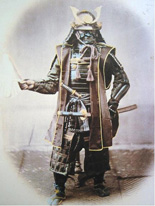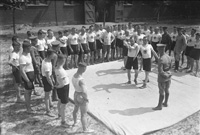|
|
|
 |
|
 |
|
| Visitors since October 2013 |
|
      |
|
|
|
|
 |
|
What is Ju jutsu?
The roots, historical Jiu Jitsu
|

|
Definition Jiu Jitsu:
(by DJJV)
"Jiu-Jitsu is a Japanese self-defense system, which was developed by the samurai. These systems (ryû) allowed the samurai at the loss of their weapons to continue the fight. The defense techniques should help the supposedly weaker, to triumph over the supposedly stronger (winning by relent)."
|
Goals of Jiu Jitsu are to make potential armed or unarmed attacker quickly and efficiently harmless. This is possible in different ways; such as by strike, kick and throw techniques or appropriate control techniques (lever and choking). The aim is not force to be expended against force in Jiu JitsuBut, by the principle of "winning by relenting" as much as possible of the power of the aggressor to be used against him. Jiu Jitsu is much more affected by the Japanese tradition than in the contrary, Ju Jutsu. There are in addition to the self-defense techniques also traditional forms of exercise such as Kata and etiquette particularly cared. The spiritual and philosophical side, such as the Code of Conduct Bushido, is as part of Jiu Jitsu, like the various fighting techniques.
Origin des Jiu Jitsu:
As in many of the Asian martial arts is the exact origin of Jiu Jitsu now scarcely clearly ascertained. In all likelihood, the roots are to be found in India. Within the art of massage based in India developed very early a wealth of knowledge regarding pain-causing grips. Presumably, this knowledge made its way from India to China. There, the techniques were further developed by members of religious circles. The knowledge about these pain-sensitive points was probably "exported" around 1600 to Japan.
|

Samurai (1860)
|
In one of the myths of the emergence, the Axime of Jiu Jitsu "giving in, to conquer" were particularly clear. It is reported that Akiyama Shirobei Yoshitoki (Japanese physician of the 16th century from Nagasaki) in addition to medical knowledge also received lessons in unarmed defense on a journey through China. He noticed the physical strength which were a prerequisite for the execution of the techniques. Back in the Japanese home, Akiyama taught the in China learned Hakuda, but many of his students did not accept this force stressed defense system. One winter Akiyama watched how the massive, but rigid branches of a fir tree broke under the weight of snow,, while the thin branches of a willow bow down under the weight of snow until the snow slid off, and then intact swing back to the starting position. Driven by this observation, he founded the first school of "Art of flexibility" and called it Yoshin-Ryu (Willow -school). The actual term "Jiu Jitsu" was created in the 18th century. The Jiu Jitsu had earlier various other names. The most common were Jiu Jitsu and Yawara, but also the names Tai Jutsu, Kempō , Hakuda, Aiki Jutsu, Kogusoku, Koshi no Mawari, Kumi Uchi, Torite or Shubaku were used for this martial art.
|

Jiu Jitsu lesson (August 1924)
|
History of Jiu Jitsu in Germany is on the one hand closely associated with the name Erich Rahn (1885-1973), to the other closely linked with the history of Kodokan Judo. Rahn opened in 1906 at the age of 21 years in a back room of a pub in Berlin-Mitte, the first German Jiu Jitsu school. The police became aware of him through demonstrations and struggles and on June 30, 1910 Rahn introduced at the Royal Police Bureau, the Jiu Jitsu. |
Then the implementation of the newly disposed Jiu Jitsu training of the Berlin criminal police and later the security police, was assigned to him. In 1913 the teaching of Jiu Jitsu at the Military Gymnastics Institute Berlin was followed. While in Germany in 1930 already 110 Jiu-Jitsu clubs were registered, the tendency was now from the Jiu Jitsu towards the by Kano developed Judo. 1933 founded Alfred Rhode the European Judo Union (EJU), thereby Jiu Jitsu and Judo were separated from each other for the first time organizationally. The self-defense from J. Kano's system retained the name Jiu Jitsu, while the competitive sports section was named judo.
From the Jiu Jitsu developed over time further martial arts:
- Judo - a throw-heavy style of Jiu Jitsu, which was born.at the beginning of the 20th century. Jigoro Kano developed Judo as an attractive martial arts for the modern Japanese society, as well as a close combat system for the Tokyo police.
- Aikido – Here are sweeping, circular movements and joint locks in the foreground. Ueshiba Morihei developed it mainly from the Daitō-ryū Aiki-Jujutsu.
- Some Karatedō-Ryū (Japanese style) are the result of influences of Jiu Jitsu and Wǔshù and are technically characterized by shock, impact, kick and block techniques.
- German Ju Jutsu is a young, composed of traditional Jiu Jitsu and many other influences system, which was developed in Germany.
- In Brazil the Brazilian Jiu Jitsu is very common, which is a version of Judo with a focus on ground fighting.
- Krav Maga combines Jiu Jitsu with boxes.
- and others ...

|